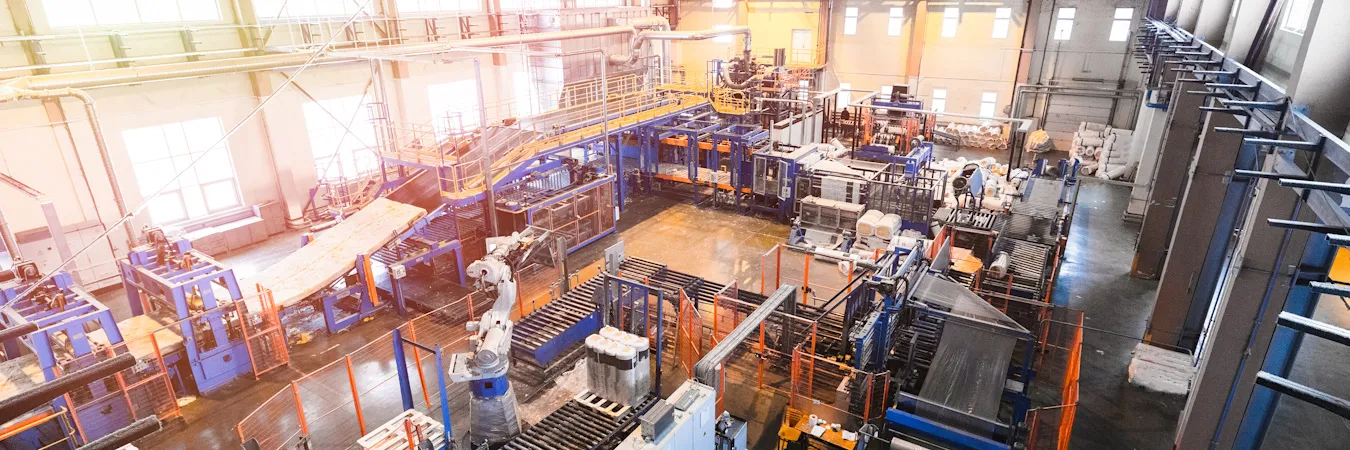Manufacturing technology is quickly elevating through notable advancements in artificial intelligence (AI) and Internet of Things (IoT) devices and services. For manufacturers, the coming year may be indelibly marked by the futuristic changes these advanced technologies bring. Yet the question for manufacturing leaders is more practical: Is investing in new technologies worth it?
One recent survey calls the potential value extracted from new manufacturing technology into question:
- 88% of companies that integrated new technology say that achieving measurable value from their investment is challenging
- 85% found it challenging to update their operating model and cover the costs of their new investment
- 84% found it difficult to train their workforce
Whether a manufacturer should invest could possibly be found in their financial facts and figures. And when the financial aspects of manufacturing technology investments take precedence, investment strategies may come into play.
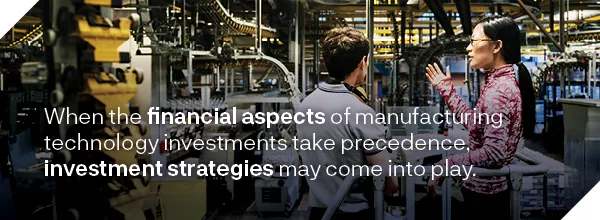
Manufacturing Technology Frontiers of 2024
There’s no doubt that manufacturing technology will achieve new heights in 2024. The capabilities of AI, machine learning (ML), automation, and IoT devices have made leaps and bounds over the past few years. These improvements are quickly making their way to the factory floor.
A recent study reveals that 83% of manufacturers believe that smart factory solutions will transform the way products are made in the next five years. So, it seems that the majority of the industry is interested in pushing their factory floor to the technological cutting edge. But what does that actually look like?
AI and ML may perform a wide variety of manufacturing functions independently. For instance, AI may conduct quality assurance checks without any human assistance, which could help ease the burdens and costs associated with the labor shortage. Entire floors can be operated solely through advanced robots, a common practice found in Japan. This can eliminate inevitable errors and enhance efficiencies through non-stop operations.
Simultaneously, IoT connections between devices enable manufacturers to monitor equipment and processes in real time. As a result, previously impossible measures like minutely targeted maintenance are routine. This may prevent costly production delays, enhance overall quality, and extend the lifespan of equipment.
However, manufacturers will likely encounter a few challenges as well. Most notably, data security may present potential complications as sensitive information and processes move online. Although, the benefits of manufacturing technology advancements may outweigh the drawbacks by a wide margin.
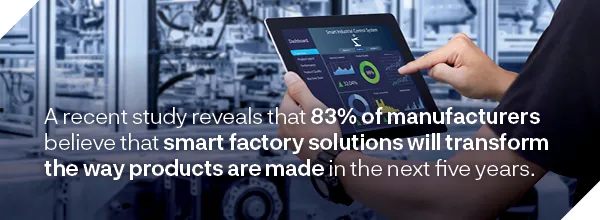
Securing Financial Foundations
Once you know the potential benefits of investing in innovative technologies, it’s easier to understand why manufacturers want to integrate them into operational processes. However, the high costs of new technology remain a barrier for many manufacturers.
That said innovative manufacturing technology isn’t necessarily out of reach. The key is to be strategic with investments. It starts with building a better financial foundation.
1. Optimizing Payment Processes
Improving your payables and receivables infrastructure to support seamless inbound and outbound payment processing may significantly impact liquidity. Efficiencies can help accurate accounts receivable (AR) and extend accounts payable (AP) providing an organization access to additional working capital without having to generate additional revenue.
Cash flow may improve in a highly efficient financial ecosystem. As a result, organizations can better resolve liquidity issues. There are several key tools that facilitate this improved financial infrastructure.
Tools like digital payment platforms can handle instantaneous transactions, improve cash flow management, and offer real-time financial data to enhance decision-making capabilities. This can help reduce the friction in individual transactions and allow employees to work on higher-order strategic planning that’s informed by the platform’s reporting.
An improved payment infrastructure may provide additional benefits like supply chain financing options. This allows for initiatives such as reverse factoring that provide suppliers with incentivized earlier payment options.
Collectively, improving cash flow can help empower manufacturers to be more strategic with their future financial investments. Moreover, leveraging treasury management solutions that automate payables and receivables can help reduce the operational costs of accounting processes.

2. Balancing Innovation and Cost Management
Innovation continues to push manufacturing into more sophisticated and efficient methods of production benefiting the industry as a whole. But when considering the impact on each individual enterprise, it is difficult to determine if the return outweighs the investment.
Recent data indicates that 89% of chief financial officers consider finding a balance between investing and cost-cutting a critical challenge to transformation. So, the problem is being keenly felt throughout the industry, but there’s no one-size-fits-all solution.
The ideal manufacturing technology investment may be in direct service of the long-term goals each company has. This way, the investment has a tangible and immediate use that can, hopefully, generate value.
Of course, as with any investment, there are notable risks and value is not guaranteed. However, preparing ahead of time with extensive market research into the equipment, contingency planning, and pilot testing can help mitigate the potential risks.
Financial Preparation in Manufacturing Technology Adoption
Companies would want to weigh all potential financial decisions carefully and strategically before acting.
Where a manufacturer allocates resources and energy will largely determine the direction of their growth. This means that a planned strategy should back all investment decisions. And this planning shouldn’t be limited to just the expansion of operations. It should also consider the long-term financial sustainability and potential returns from any manufacturing technology investment.
It’s important to analyze the financial implications of new technology upgrades. For instance, manufacturers might compare the potential reduction in operating costs with the upfront expenses to determine the ultimate value.
A comprehensive cost-benefit analysis can yield the most instructive information that leadership has to go on when making financial decisions. However, once a company determines that the opportunity is worthwhile, the next step is to examine different funding opportunities for the investment.
Shareholders, commercial loans, co-funding, or supplier’s credit may all help manufacturers secure their upfront expenses. However, the right option will, of course, depend on the unique financial factors of the enterprise.
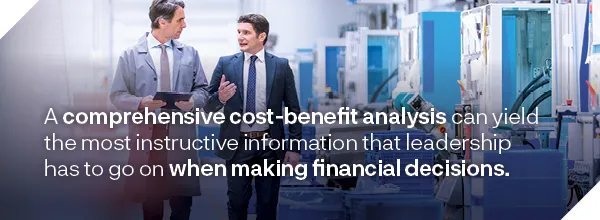
3. Strategic Debt Management
Savvy manufacturing leaders armed with a strategic plan often leverage debt as a tool to help them achieve their desired growth goals.
A strategic approach organizations can use when it comes to debt management is to diversify sources. This could help manufacturers secure the most favorable terms and empower them to tailor their liabilities to current market conditions or organizational needs.
At the same time, crafting contingency plans in case repayment becomes a challenge can help mitigate the resulting impacts.
And finally, companies should consider putting risk buffers in place to avoid common pitfalls. For instance, a manufacturer could possibly maintain a cushion by lowering leverage ratios and setting aside reserves. This may help to ease pressures of economic downturn or market volatility.
4. Manufacturing Process Technology Strategy
Some manufacturers' investment goal is to perfectly align process strategies with technological innovations. But doing so requires factoring in both scalability and adaptability. There’s no doubt that manufacturing technology will achieve new heights in 2024.
Throughout the year, demand scales up and down rapidly—particularly during the holiday season. Manufacturing technology needs to be able to scale production up and down to match current market demand. Otherwise, the technology won’t yield continuous returns throughout the year. In fact, it may even hike up expenses with extensive overstock.
From a more long-term outlook, the new technology should also be adaptable enough to integrate with potential future innovations. This means designing processes with the foresight of future technological advancements, allowing for the seamless integration of new tools and systems.
Finally, it’s important to remember that technology is continuously adapting. Manufacturers that don’t keep up with innovation risk getting left behind.
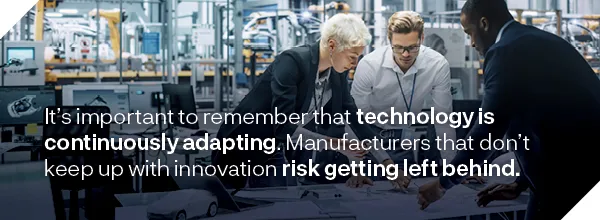
5. Revenue Diversification
Companies without diversified revenue streams could be vulnerable should their one mode of profit experience any form of disruption, the entire organization could be at risk. That’s why it’s wise for manufacturers to establish multiple avenues through which they generate profits.
Manufacturing technology investments can help businesses diversify by enabling production for new products and markets. This offers additional financial security during the investment payback period—multiple streams of income stabilize prior reliance on a single product or market.
As a result, unpredictable factors like market volatility or trends don’t have overwhelming control over a manufacturer’s business prospects. The business may then scale with less risk by creating a safe foundation that can withstand the inevitable hits that will occur over its lifespan.
6. Automation and Cash Flow Optimization
The labor shortage has squeezed the hiring budget of many manufacturers worldwide. Manufacturing may be hampered not only by disruptions in the supply chain but also by a workforce shortage that has limited production potential.
However, recent advancements in automation and AI present cost-effective solutions to this quandary. This is why considering investments in new technology is on 59% of executives’ near-term business agenda. In fact, 46% specifically say they intend to invest in Generative AI (GenAI). Experts widely consider this to be a smart investment—estimates suggest that by 2025, robotics could reduce labor costs by as much as 16% globally.
Leveraging Financial Preparation: How a Banker Can Help
Trying to leverage tried-and-true manufacturing technology investment strategies can help a company craft a financially savvy approach. But generic strategies will only go so far.

Truly maximizing the value of an investment takes an in-depth understanding of the unique factors of a business. To this end, one of the most effective strategies that a company can use to wring more value from an investment is to partner with a commercial banker.
The banker can work collaboratively with the manufacturer to offer invaluable insights and guidance tailored to a company’s unique needs. This enables the parties to foster a partnership where the bank understands the specific challenges and opportunities of the business.
Then, through this information, the banker can come up with customized financial solutions that align closely with the company’s strategic goals.
But selecting the right partner isn’t as simple as calling up the nearest bank. It’s important to find someone who’s familiar with the manufacturing sector specifically, such as the partners at Minnesota Bank & Trust, a division of HTLF Bank.
Minnesota Bank & Trust, a division of HTLF Bank partners can provide you with tailored financial insights and solutions to help your business stay agile and resilient in a dynamic economic environment. Start a conversation with a commercial banker at Minnesota Bank & Trust, a division of HTLF Bank today.
These links are being provided as a convenience and for informational purposes only; they do not constitute an endorsement or an approval by HTLF of any of the products, services, or opinions of the corporation or organization or individual. HTLF bears no responsibility for the accuracy, legality or content of the external site or for that of the subsequent links. Contact the external site with questions regarding its content and privacy policy.

